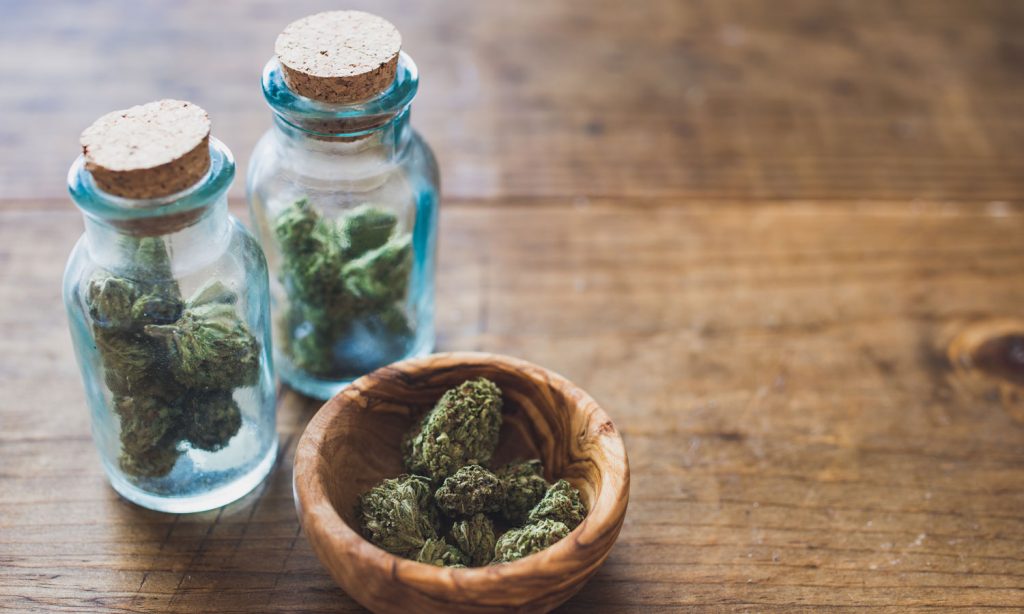
Major and Minor Cannabinoids – Which Ones Do You Need to Know By Name?
How well do you know your cannabinoids? Most people are familiar with the two main cannabinoids: THC and CBD. However, cannabis is a complex plant with complex chemistry. As we continue to explore these connections, we begin to uncover the very nature of the experience we get from ingesting the plant.
In this article, we’re going to take an “under the hood” look to see what these cannabinoids are all about. In the near future, the “Sativa” and “Indica” classifications will become less important when choosing your perfect strain. It’s wise to educate yourself on the intricacies of cannabis.
This article was inspired by an LA Times article in which they eloquently broke down cannabinoids using pop culture to get the point across.
Photo by Bacsica/Getty Images
THC
We’ll start with THC mainly because it’s one of the most well-known cannabinoids on the market. It’s what everyone is either trying to limit or get more of. THC is responsible for your high and comes in a variety of forms. We have Delta-9 THC, which is what you get when you vape or smoke the plant. Then you have 11-hydroxy-THC, which is what happens when the liver processes it.
Delta-8 THC and Delta-10 THC are also popular these days because it is not currently illegal under the Controlled Substance Act and can be derived from hemp.
CBD
The second famous cannabinoid is CBD (cannabidiol). People call it the “medical cannabinoid” because it doesn’t get you high and seems to help with many ailments. It’s also one of the few cannabinoids to have an FDA-approved drug on the market.
CBD is a Nuero controller, it helps with anxiety, stress, seizure disorders and is widely used practically everywhere. This is also legal at the federal level.
RELATED: These are the next big cannabinoids to go mainstream
 Photo by Charles Wollertz/Getty Images
Photo by Charles Wollertz/Getty Images
CBG
CBG (cannabigerol) can become CBD or THC depending on what happens to it. It is sometimes referred to as the “mother cannabinoid” for this very reason.
RELATED: How Cannabigerol May Help Fight Antibiotic-Resistant Bacteria and Viruses
It also has effects similar to CBD, which is a benefit for people thinking about using it to fight things like cancer, irritable bowel syndrome, and so on.
CBN
CBN (cannabinol) is a cannabinoid that occurs over time as the cannabinoids break down due to oxidation. If you omit your stash, CBN will become more important. When you smoke this CBN weed you will have a powerful sleep aid. It also has antibacterial properties.
RELATED: This cannabinoid is believed to have the most important sleep-promoting properties
 Photo by Mpho Mojapelo via Unsplash
Photo by Mpho Mojapelo via Unsplash
CBC
Next we talk about cannabichromene, which is really not very popular and kind of illusory in the modern market. It is reported to have effects similar to THC and CBD, except that it is not as potently “narcotic” as THC alone. It helps reduce inflammation and block pain.
THC v
THCv, or tetrahydrocannabivarin, is a cannabinoid that gets you high without making you craving. Researchers have known about this cannabinoid since the 1970s.
RELATED: THCV: Powerful appetite-suppressing cannabinoid
It’s still not as popular as THC, but with appetite suppressant effects we can expect it to make its way into the “weight loss industry”.
THCa
All cannabinoids start out in their acidic form. THCa is essentially THC in its acidic form, meaning it’s still non-psychoactive.
Recently, the chemist Dr. Mechoulam, known for discovering THC, discovered great results with THCa. Because in its acidic form, the bioavailability of THC increases a thousandfold.
This means greater potential for pain relief and neurodegenerative relief. While THC is in its acidic form, it also has no psychoactive properties. The main downside is that it is not a very stable cannabinoid, but this could soon be circumvented with “organic cannabinoid factories”.
 Photo by Seth Ryan/EyeEm/Getty Images
Photo by Seth Ryan/EyeEm/Getty Images
Delta-8 THC
Delta-8 is currently in this state of limbo. It gets you high, much like regular Delta-9, except it’s not listed on the Controlled Substance Act. This means it is a legal high nationwide!
More importantly, Delta-8 can be derived from hemp, making it particularly difficult to regulate lest you take advantage of hemp’s potential.
RELATED: How Did Delta-8 THC Become Legal Across America?
Obviously, sooner or later lawmakers will sink their fangs into this substance and make it illegal again. But right now, it’s one of the few legal cannabinoids that gets you high.
There’s more to come…
The more we research this phenomenal plant, the more we discover! A few years ago, knowledge about these insignificant cannabinoids only came to light. Today there is much more detailed information on each one mentioned here.
What we have presented to you here today is just the tip of the proverbial iceberg. As we continue to open this box of knowledge and expand our understanding of cannabinoids, terpenoids and flavonoids, our means of classifying cannabis will also undergo this type of transformation.
Soon we’ll be asking about specific ratios of specific cannabinoids to achieve specific “highs” or medicinal treatments. Not to mention the specific cannabis-based medicines that are cooked up in pharmaceutical labs around the world.
We are about to enter a new era of cannabis research. We’ll have to see how the rest of the year unfolds, but I see we’re already going through a massive shift.
In the meantime, understanding these small differences is important to becoming a more conscious consumer.
This article originally appeared on Cannabis.net and has been republished with permission.

Post a comment: